 
|
 | ||
In 1348-49 a bubonic plague (The Black Death) almost halved the population of Europe. In Tuscania its impact was so heavy that
the oldest part of the town where the main medieval churches
(S. Pietro and S. Maria Maggiore) were located was abandoned.
A sensible town planning has addressed the expansion of modern
Tuscania towards an area behind its western walls, preserving the very medieval view of the town from its old center.
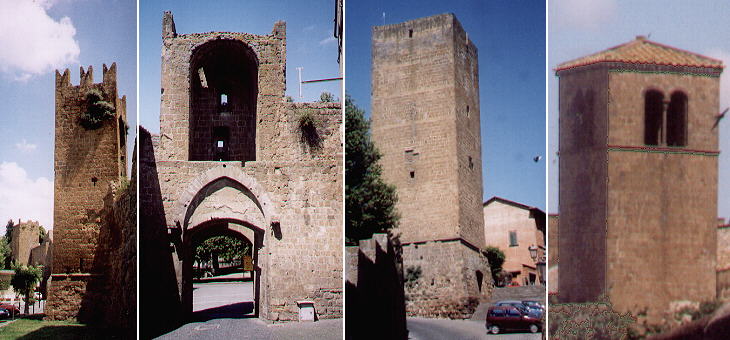 | ||
Tuscania retains most of its medieval walls and some towers protecting the palaces of the most important families. Even some of the bell towers have the appearance of a military building.
Torre del Lavello protected the palace of the Lavello family who in the early XVth century vainly attempted to lessen papal authority.
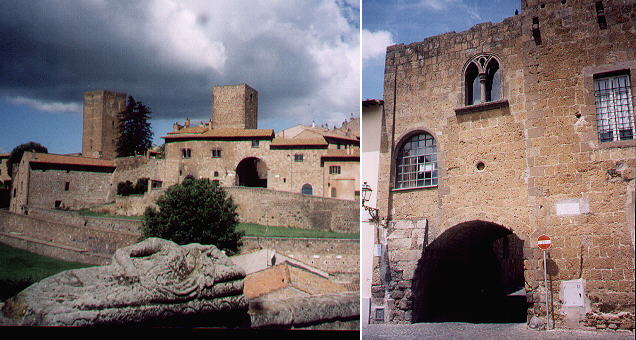 | ||
Tuscania was an Etruscan town of some importance and many tombs have been found in its neighbourhood. The rich were buried in sarcophagi covered by a statue where they were portrayed in a posture which to our modern mind suggests someone who is sick, but which for the Etruscans and for the Romans was the usual way they attended a banquet (which was customary in funerary ceremonies).
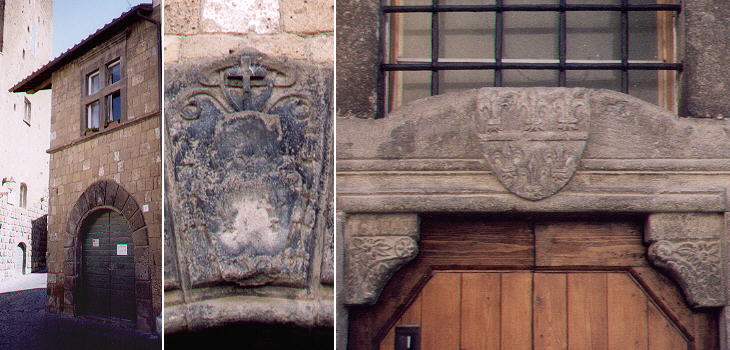 | ||
Tuscania was located very close to the Duchy of Castro, a small state run by the Farnese family for more than a century. Their coats of arms on the very few Renaissance buildings of Tuscania show that they had a great influence on the town.
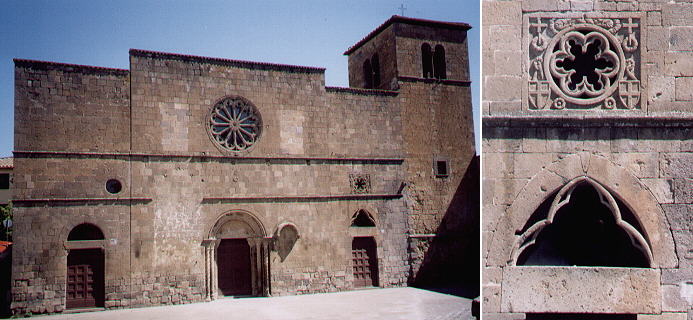 | ||
The XIVth century church of S. Maria della Rosa has several points in common with churches of Corneto (Tarquinia). The horizontal design of the fašade is typical of the architecture of the Abruzzi region, and it is relatively unusual in Latium.
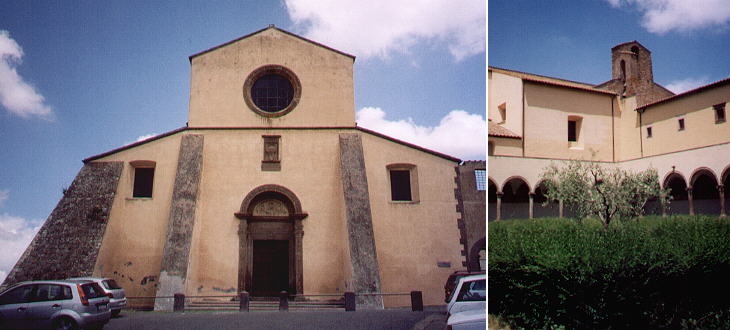 | ||
Tuscania is located in a region which has a high seismic risk and the Renaissance church of S. Maria del Riposo was protected against the effects of earthquakes by additional walls. The monastery next to it has a very large cloister and it now hosts the archaeological museum of Tuscania.
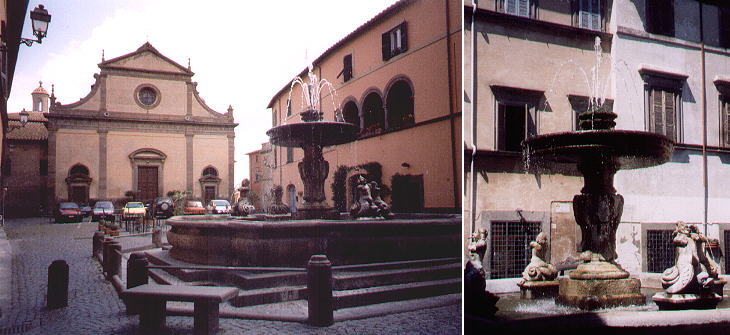 | ||
The cathedral was almost entirely redesigned in the XVIIIth century, but it retains its XVIth century fašade built by Cardinal Gambara, the founder of Villa di Bagnaia. The fountain is thought to be a work by il Vignola, who worked for Cardinal Gambara in Bagnaia.
Go to page two to see the finest churches of Tuscania.
In and about Viterbo - other pages:
Viterbo
Bagnaia
Bagnoregio
Bomarzo
Orte and Vasanello
S. Maria della Querce
S. Martino al Cimino
Vitorchiano
Walks with Ferdinand Gregorovius in the Roman countryside
some other walks:
A walk to Porta Furba
Via Appia Antica from Cecilia Metella to Torre in Selci
Via Appia Antica from Torre in Selci to Frattocchie
See my Home Page on Baroque Rome or my Home Page on Rome in the footsteps of an XVIIIth century traveller
All images © 1999 - 2004 by Roberto Piperno. Write to romapip@quipo.it
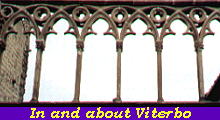 Tuscania: the town
Tuscania: the town